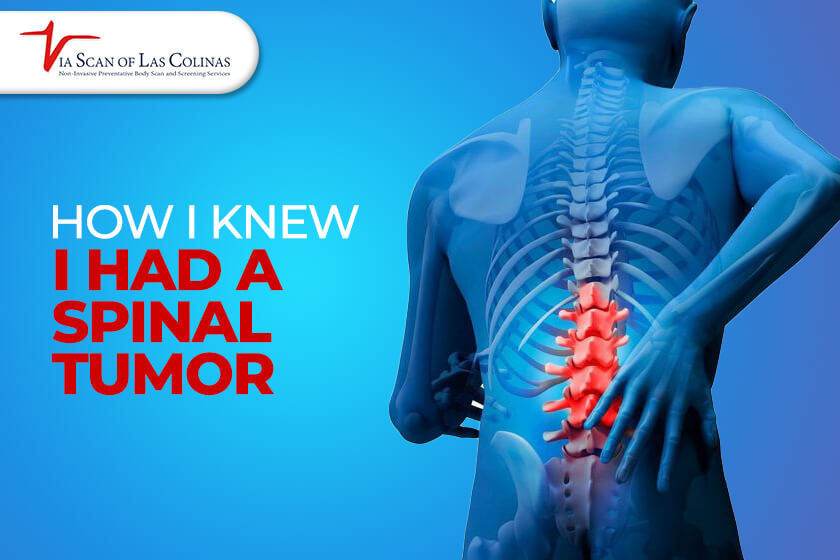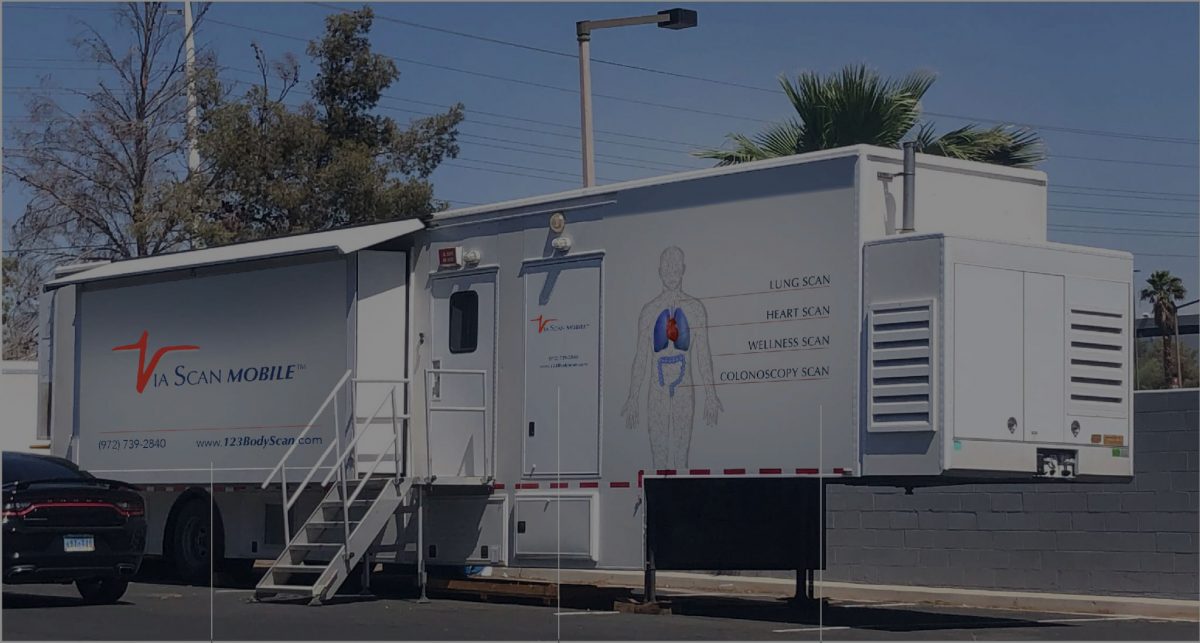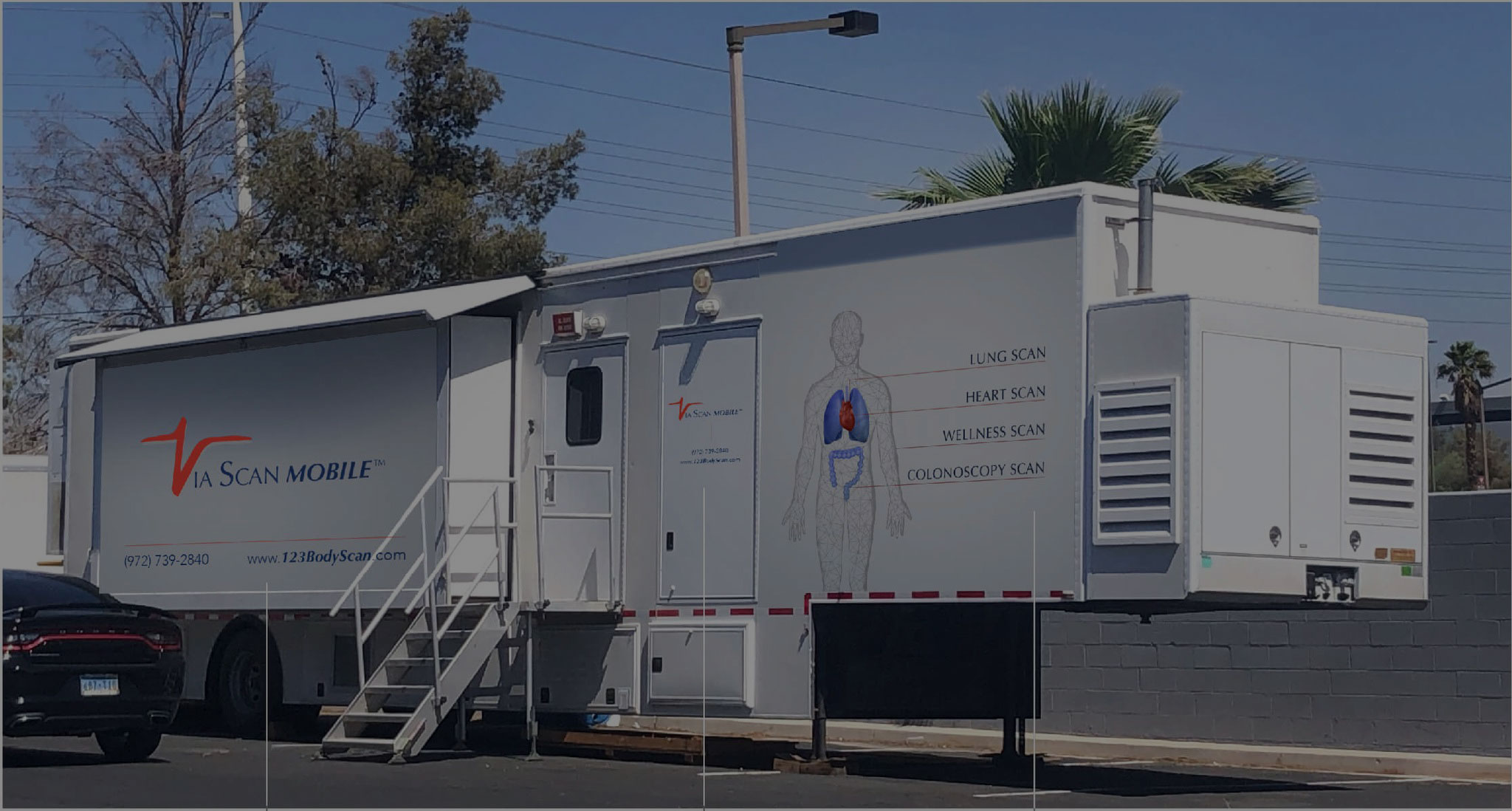Anomalies residing in or close to the spinal cord and spinal column are known as spinal tumors. Spinal tumors are generally uncommon, but if ignored, they can result in severe neurological problems. Because of this, it’s essential to be able to identify the symptoms and know when you should get medical attention. This blog article will give a general review of spinal tumors, covering their etiology, symptoms, methods of diagnosis, and available treatments. We are going to also go over a few of the most important indicators that a spinal tumor may be present. We intend to provide readers with the knowledge to clarify whether a spinal tumor is the cause of their symptoms and to promote prompt medical attention. Early identification and treatment are essential for better results and to maintain brain function. With ViaScans’ cutting-edge imaging technologies, such as the Wellness Body Scan, a thorough spine examination may be performed to identify or rule out tumors and additional anomalies.
What is a Hemangioma on the Spine?
Hemangiomas, or benign tumors composed of tiny blood vessels grouped to form a lesion or mass, are signs of spinal tumors. Hemangiomas are growths that occur on the outermost layer of bone structure, including the spine. In as many as twelve percent of cases involving adults, spinal hemangiomas are harmless spine tumors that are most frequent. Most are unintentionally identified and do not create any problems. Sometimes hemangiomas enlarge to the point where they squeeze the spinal cord and nerve endings, resulting in symptoms like spinal tumors, such as lower extremities or back discomfort or numbness. Surgery reduces stress on the nerves and the spinal cord in patients with acute hemangiomas.
Why is Spinal Tumor Pain Worse at Night?
Pain from a spinal tumor that worsens at night might have several causes. One is the fact that throughout the day, lying down applies more stress to nerves and spinal cancers than standing upright. The effects of gravity intensify. Certain tumors may even enlarge or bulge at night, causing additional pain and discomfort when lying flat. The fact that you are less preoccupied when attempting to sleep could also make pain worse. In this calm setting, you can pay closer attention to any pain you might have missed during hectic daily activities. Spinal tumors may also exacerbate pain at night due to fluctuations in cortisol and other hormone levels that affect how one feels pain. Tell your doctor if you frequently have back or neck discomfort surges while trying to fall asleep. A lump near the spine’s middle back can indicate a spinal tumor.
Can You Feel a Spinal Tumor with Your Hand?
Indeed, in some circumstances. Hand examination may reveal superficial bumps around the middle back spine linked to slow-growing cancers. Large masses can occasionally grow from both benign tumors, such as neurofibromas, and dangerous tumors, such as soft tissue sarcomas and spinal tumors. You might be able to feel a projecting lump, hump, or lump across the vertebral column with your fingertips if a spinal tumor is sufficiently large and near close to the outermost layer of the skin. Deeper-seated spinal tumors, however, are probably not going to be visible. A complete view and assessment of the spine requires advanced imaging. Never assume that the lack of a bump in your back indicates the presence of a tumor. However, never assume the absence of a bump in your back suggests the presence of a tumor. However, if you self-examine your back and find any strange or worrying lumps or bumps, contact your physician. Early identification and evaluation are essential.
What is a Tumor of the Spinal Cord Called?
Spinal tumor spine cancer is cancer that starts inside the spinal cord. Signs and symptoms include bladder and bowel malfunction and progressively deteriorating muscular and sensory issues, such as immobility and tingling in the limbs. These show the pressure on the spinal cord from the tumor’s growth. Most intramedullary spinal cord tumors, particularly in youngsters, are not malignant. Adults can, however, develop malignant tumors such as glioblastomas. Malignant nerve tumors can also be metastasized from pulmonary, breast, or lymphoma malignancies. Endoscopy is done after an MRI to confirm the diagnosis. In situations of malignancy, treatment comprises chemotherapy, radiotherapy, and surgery to detach the tumor.
Risk Factors
| Reasons | Description |
| Hereditary disorders | Von Hippel-Lindau disease (VHL): a genetic disorder that frequently necessitates medical attention and results in tumors and cysts in several organs, including the kidneys, eyes, and pancreas.
Neurofibromatosis: Although benign tumors are the hallmark of this disorder, they also raise the chance of spinal cancer on nerve tissue, which can cause a variety of neurological and cutaneous problems. |
| Previous history of cancer | Greater likelihood if you’ve ever had renal, breast, pulmonary, or malignancies. |
| Encountering radiation exposure | Rarely, radiation treatment for a previous malignancy may result in subsequent spinal malignancies. |
| Being a Smoker | Increases the probability that lung cancer may spread to the spine |
| Metastatic cancer | Malignancies that originate in the breast, lung, prostate, or myeloma (plasma) and spread to the spine are referred to as metastatic malignancies. |
Reasons for Spinal Tumors
The causes of spine tumors differ according to the kind of tumor. Cancerous spinal tumors frequently originate from primary locations such as the breast, prostate gland, lung capacity, kidneys, liver, or adrenal glands, which have propagated or grown to the spine. For instance, spinal metastases occur in as many as seventy percent of cases of breast cancer. Initial spinal cancers originate from cells found inside the spinal column. These may be benign (carcinogenic) or malignant non-cancerous. The most common forms of spinal tumors are:
- Astrocytoma: a tumor of the supporting cells inside the spinal cord
- Meningioma: tumor of the tissue that covers the spinal cord
- Schwannoma: a tumor of the cells surrounding the nerve fibers
- Ependymoma: a tumor of the cells that line the cavities of the brain
- Lipoma: a tumor of the fat cells
- Prostate, lung, and breast cancers
- Leukemia: a blood cancer that starts in the white cells in the bone marrow
- Lymphoma: a cancer of the lymph tissue
- Myeloma: a blood cancer that starts in the plasma cells of the bone marrow
Signs and symptoms
The location, kind, and overall state of your health all affect the symptoms. Metastasized or secondary tumors that have traveled to the spine from another location can develop rapidly. Usually, primary tumors develop gradually over several weeks to years. Among the symptoms might be:
-
unusual feelings or lack of feeling, particularly in the legs
Progressively worsening back pain that often affects the middle or lower back is typically severe and unresponsive to pain medication, worsens when lying down or strains (as happens when one coughs or sneezes), and may radiate to the hips or legs. bowel incapacity and bladder leakage.
-
Spasms, cramps, or contractions of the muscles (fasciculations)
Leg muscles become weaker and less powerful, leading to falls, difficulty walking, and even worsening (progressive) paralysis.
- Tumors forming inside the neural tissue of the spinal cord are known as intramedullary tumors. frequently results in neurological symptoms such as pain, numbness, and weakness since the spinal cord is directly compressed.
- Tumors inside the dura mater, the outermost membrane enveloping the spinal cord and cerebrospinal fluid (CSF), are known as intradural tumors. Depending on where they are, these tumors may compress the spinal cord or nerve roots, resulting in symptoms.
Choose Our Full Body Scan
Early Detection Saves Lives!
-
- Accurate
- Quick Result
- Affordable

Conclusion
Spinal tumors are a broad category of malignant growths that, although they are not familiar, can have a significant effect on neurological function if they are not treated. Numerous vital signs, such as increasing nighttime localized spinal pain, palpable lumps across the spine, and gradual deficiencies in motor and sensory nervous systems, are indicative of tumor expansion-induced compression. Treatment for spinal tumors, whether malignant or benign, is necessary. To receive the proper scanning for a quick diagnosis and detection, you must immediately notify your physician of any problematic symptoms. Scans, such as the Wellness Body Scan provided by ViaScans of Las Colinas, allow a comprehensive perspective of the spinal structure to identify malignancies not visible on standard X-rays.
To prevent more harm, this makes prompt identification and treatment more accessible. Even though they are frightening, spinal tumors, especially the non-cancerous kinds, are often curable. Radiation, chemotherapy, and surgery can all be valuable methods for controlling and removing tumors. If you believe that a spinal tumor is the cause of your symptoms, listen to your body’s warnings and take care of yourself. Early detection is crucial for maintaining cerebral functioning and standard of life following diagnosis.






